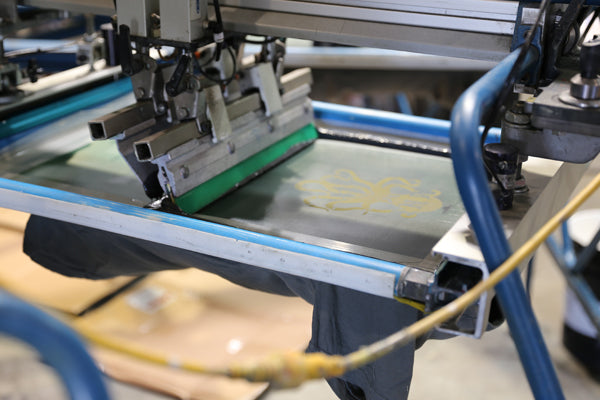A LESSON IN TEXTILE PRINTING
A lesson in textile printing.
Water-based and Plastisol


Water-based inks use dyes or pigments with water as the solvent. Another form of water-based ink is Discharge ink, which we use on our darker color shirts. These inks sink into the fabric of the garment and offer that soft, comfortable touch that feels like you've owned this shirt for years.

Plastisol is a PVC (polyvinyl chloride) based system that uses thermoplastic ink that must be heated to a very high temperature (around about 300°F to 330°F) to cause the molecules of the PVC resin to solidify. Plastisol sits on top of the fabric, hence giving it a heavy, stiff feel.
Plastisol has long-been the industry standard for printing tees as it's user-friendly, predictable and has few variables, creating a lower margin of error. Water-based printing is more of an art form. We believe it allows for more creativity and simply feels and looks significantly superior.


HMNIM prints our tees using only water-based or discharge inks. We never use Plastisol. We believe it's worth spending the extra time and money to deliver a quality product that we're proud to create and you can be proud to own.










